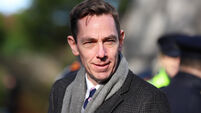Lights flicker to life in the dark continent
Lights flickered back on in the north-east US and Canada today as the biggest power cut in American history stubbornly retreated.
The cause of the huge failure, which affected 50 million people over 9,300 square miles, was still not clear, and officials on both sides of the border were blaming each other.














